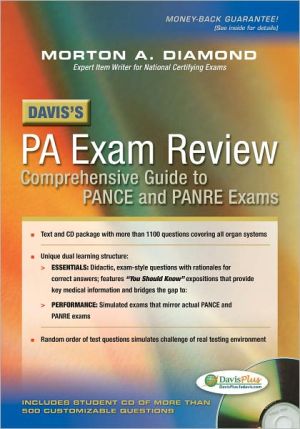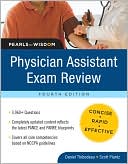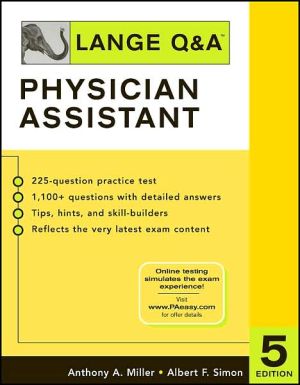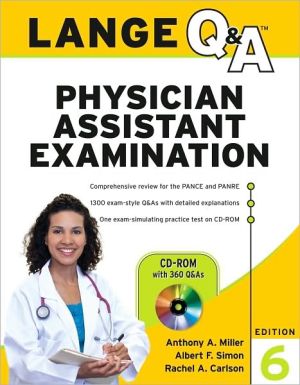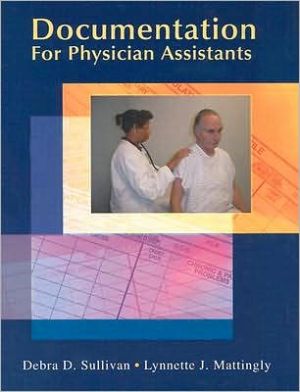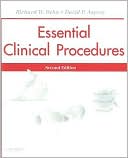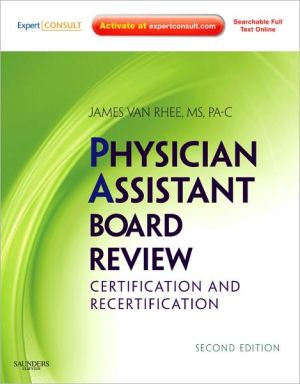Physician Assistant's Clinical Companion
Physician assistants have speedy access to essential facts in important medical specialty areas. Provides tips for assessing patients from different cultural backgrounds, pediatric and geriatric alerts, patient counseling, and when it's imperative to consult with a colleague or refer to another practitioner. Contents include assessment findings, ECGs, laboratory tests, common X-rays, dermatologic disorders, disease management, emergency care, primary care procedures, infection control, drug...
Search in google:
Physician assistants have speedy access to essential facts in important medical specialty areas. Provides tips for assessing patients from different cultural backgrounds, pediatric and geriatric alerts, patient counseling, and when it's imperative to consult with a colleague or refer to another practitioner. Contents include assessment findings, ECGs, laboratory tests, common X-rays, dermatologic disorders, disease management, emergency care, primary care procedures, infection control, drug hazards, financial and legal issues, health promotion, normal and crisis laboratory test values, selected references, and an index. Martin Keck This is a compilation of highlights and key elements relating to the breadth of physician assistant (PA) practice in medicine today. The stated purpose is to serve as a "peripheral brain" for practicing physician assistants and physician assistant students, providing new information on the changing medical tapestry while also reinforcing the established knowledge base. The editor seeks to provide a quick reference to essential information across all major medical specialties. As indicated by the title, as well as the forward written by well-known PA educator J. Dennis Blessing, this book is targeted at student and working physician assistants. Although not exhaustive in content, it certainly would be an asset to students in clinical training as well as clinicians on the run. The profession is well represented in the authorship of this book, drawing from the realms of PA education, academic medicine, and private practice. Reviews of common presenting chief complaints, primary and emergency care issues and procedures, standard laboratory tests and x-rays, as well as brief chapters on the business of healthcare and wellness are included in this work. It is presented in an 8" by 4 1/2" sharp, concise format, so it fits easily in a lab coat pocket or top desk drawer. There is a good table of contents as well as an index. As an example of the editor's focused clarity, the section on EKGs has an overview/review of lead placement, determination of electrical axis and the implications of deviation, and overall interpretation — all in the space of 12 pages. This book can certainly serve as a helpful reference to its intended audience. Some important primary care topics are missed,such as arthritis and kidney failure, weakening its use as THE book of choice.
1 Assessment Findings2 ECGS3 Laboratory Tests4 Common X-rays5 Dermatologic Disorders6 Disease Management7 Emergency Care8 Primary Care Procedures9 Infection Control10 Drug Hazards11 Financial and Legal Issues12 Health Promotion
\ From The CriticsReviewer: Martin Keck, MEd, MHS, PA-C(Medical College of Ohio)\ Description: This is a compilation of highlights and key elements relating to the breadth of physician assistant (PA) practice in medicine today.\ Purpose: The stated purpose is to serve as a "peripheral brain" for practicing physician assistants and physician assistant students, providing new information on the changing medical tapestry while also reinforcing the established knowledge base. The editor seeks to provide a quick reference to essential information across all major medical specialties.\ Audience: As indicated by the title, as well as the forward written by well-known PA educator J. Dennis Blessing, this book is targeted at student and working physician assistants. Although not exhaustive in content, it certainly would be an asset to students in clinical training as well as clinicians on the run. The profession is well represented in the authorship of this book, drawing from the realms of PA education, academic medicine, and private practice.\ Features: Reviews of common presenting chief complaints, primary and emergency care issues and procedures, standard laboratory tests and x-rays, as well as brief chapters on the business of healthcare and wellness are included in this work. It is presented in an 8" by 4 1/2" sharp, concise format, so it fits easily in a lab coat pocket or top desk drawer. There is a good table of contents as well as an index. As an example of the editor's focused clarity, the section on EKGs has an overview/review of lead placement, determination of electrical axis and the implications of deviation, and overall interpretation — all in the space of 12 pages.\ Assessment: This book can certainly serve as a helpful reference to its intended audience. Some important primary care topics are missed, such as arthritis and kidney failure, weakening its use as THE book of choice.\ \ \ \ \ Martin KeckThis is a compilation of highlights and key elements relating to the breadth of physician assistant (PA) practice in medicine today. The stated purpose is to serve as a "peripheral brain" for practicing physician assistants and physician assistant students, providing new information on the changing medical tapestry while also reinforcing the established knowledge base. The editor seeks to provide a quick reference to essential information across all major medical specialties. As indicated by the title, as well as the forward written by well-known PA educator J. Dennis Blessing, this book is targeted at student and working physician assistants. Although not exhaustive in content, it certainly would be an asset to students in clinical training as well as clinicians on the run. The profession is well represented in the authorship of this book, drawing from the realms of PA education, academic medicine, and private practice. Reviews of common presenting chief complaints, primary and emergency care issues and procedures, standard laboratory tests and x-rays, as well as brief chapters on the business of healthcare and wellness are included in this work. It is presented in an 8" by 4 1/2" sharp, concise format, so it fits easily in a lab coat pocket or top desk drawer. There is a good table of contents as well as an index. As an example of the editor's focused clarity, the section on EKGs has an overview/review of lead placement, determination of electrical axis and the implications of deviation, and overall interpretation — all in the space of 12 pages. This book can certainly serve as a helpful reference to its intended audience. Some important primary care topics are missed,such as arthritis and kidney failure, weakening its use as THE book of choice.\ \ \ 3 Stars from Doody\ \


